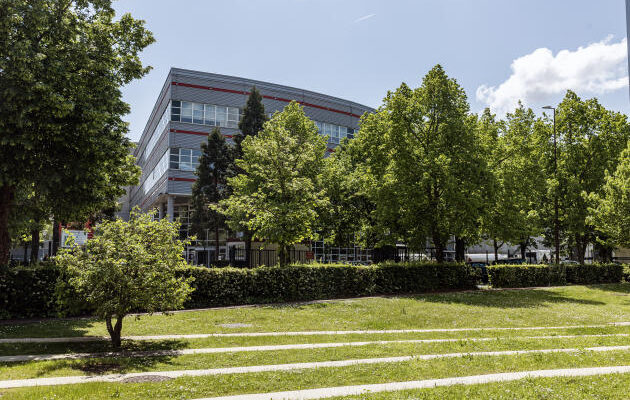“Behind every spike, there are patients. » Boots on his feet, Thomas Brisset sinks into the vast field of blur in full bloom, mechanically dislodging a few unwanted stems in passing. “Fulpine”, he apologizes. Since his arrival at Stallergenes Greer, the engineer has jealously watched over the grass pollen harvests sown by the group. “It is the raw material for our medicines. We watch it like milk on fire. »
The pharmaceutical laboratory has established itself for more than half a century as a reference in the manufacture of allergen immunotherapies, these desensitization treatments intended to treat severe allergies.
“The principle is to administer daily to the patient small doses of allergens in order to re-educate his immune system so that he stops considering them as enemies. Unlike antihistamines and corticosteroids, immunotherapy treats the cause of the disease”explains Dominique Pezziardi, director of the tricolor subsidiary of the laboratory.
Agricultural hazards
For this purpose, the group cultivates around 90 hectares of land in the Loiret, spread over around thirty plots in the countryside near its Amilly site. A total of five varieties, “responsible for 99% of grass allergies”are produced and collected there each year from April to mid-July: cocksfoot, timothy, tares, fluff and bluegrass.
This originality, claimed by the manufacturer, allows it to maintain end-to-end control and quality of its supplies. Without exempting it from agricultural hazards. This morning, the imposing combine harvester, with its 8-meter-wide boom specially designed to rub the pollen without cutting the stems of the plants, and its enormous tentacles intended to suck up the seeds, will remain silent because of the wind. Beyond 7 km/h, the pollen flies away, making any harvest impossible.
A few kilometers away, in the group’s buildings located in the industrial zone of Amilly, the site’s employees are busy processing the harvests of the last few weeks. After being crushed, the pollens are placed in a freeze-dryer for three days, then passed through a vibrating sieve to remove impurities. They are then degreased and dried for two days in ovens. On average, 1 hectare of harvest results in 5 kilos of processed material.
More than forty countries
Shipped to the Antony plant (Hauts-de-Seine), this fine powder of purified pollen will be used in the manufacture − in the form of tablets, oral or injectable solutions − of desensitization treatments against grass allergies, one of the company’s star products.
You have 54.55% of this article left to read. The following is for subscribers only.
